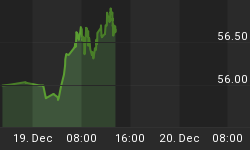Chart 1 below is the follow-up to the 2/4/2008 chart and the 2/14/2008 chart that I had posted on my Thursday, 2/14/2008 update. The 2/4/2008 i-TIC (Intraday Technical Indicators Composite) Index showed that the market had become over-extended from breaking out of the January 23 bottom while the 2/14/2008 chart showed that, in the process of reverting back to the mean, the fast line (red line) had falling too far ahead of the slow line, which created a gap (red X mark) between these two lines. This statistical deviation usually means another imminent reversion to the mean. The subsequent reversion, or the turnaround of the fast line, when provided with enough momentum, can sometimes reverse the market trend. Unfortunately, it didn't happen this time. After the fast line re-joined the slow line (blue line), they then resume to trend lower together. That had led to three straight down days last week, including Friday's selloff. But, the merge of these two moving averages also signifies another statistical event. It indicates that the volatility has been squeezed to an extremely low level.

Chart 1
Since moving averages of different number of periods never stick together for long, this volatility squeeze indicates that a big move is forthcoming. The Standard Deviation that measures price volatility also confirms this extremely low level of volatility. The 14-period Standard Deviation in the upper pane of Chart 2 shows that the price volatility reaches the level about as low as December when the market began to fall sharply. There's no question that the market's now poised for another big move. The only question is which way will it go?

Chart 2
As grim as last Friday's selloff might look, my i-TIC Index's trend of higher highs and lower lows still appears intact (revisit Chart 1 - see red arrows). In fact, Friday's selloff seemed to have been pre-determined. The opening 1% gap down that immediately followed by sharp price decline on spikes of selling volume within the first hour of trading on this 10-min Nasdaq 100 PowerShares intraday chart (Chart 3) looked as though some investors had already determined to liquidate their portfolios, perhaps as end-of-month cash run, no matter what. That first hour of trading contributed to about a quarter of Friday's trading volume and more than 2% of the price decline. The rest of the session was nothing more than another typical Friday in a down market.

Chart 3
What happened during the first hour of trading on Friday was the knock-out punch that was simply too much for the market, in its current fragile state, to overcome. Those who weren't prepared to sell might've been forced into selling later in the afternoon. The whole thing appears statistically overdone anyway with the Nasdaq Trin Index shot up to 2.40 (see Chart 4 below). The large intraday gap between the Nasdaq Up Volume and the Nasdaq Trin Index verifies this excessive purging on Friday. A reversion to the mean to correct this statistical deviation should take place soon.

Chart 4
Yes, there's no shortage of negative news, and, yes, the market had begun a long-term downtrend. But, the selloff on Friday as well as the downfall since December seem quite excessive. Everything from credit problem to commodity price inflation and economic contraction should've been discounted already. The short-term weakness, as indicated by i-TIC Index (Chart 1), may carry on for a few more sessions, but it shouldn't come as a surprise if the market were to make a big move to the upside after that.















